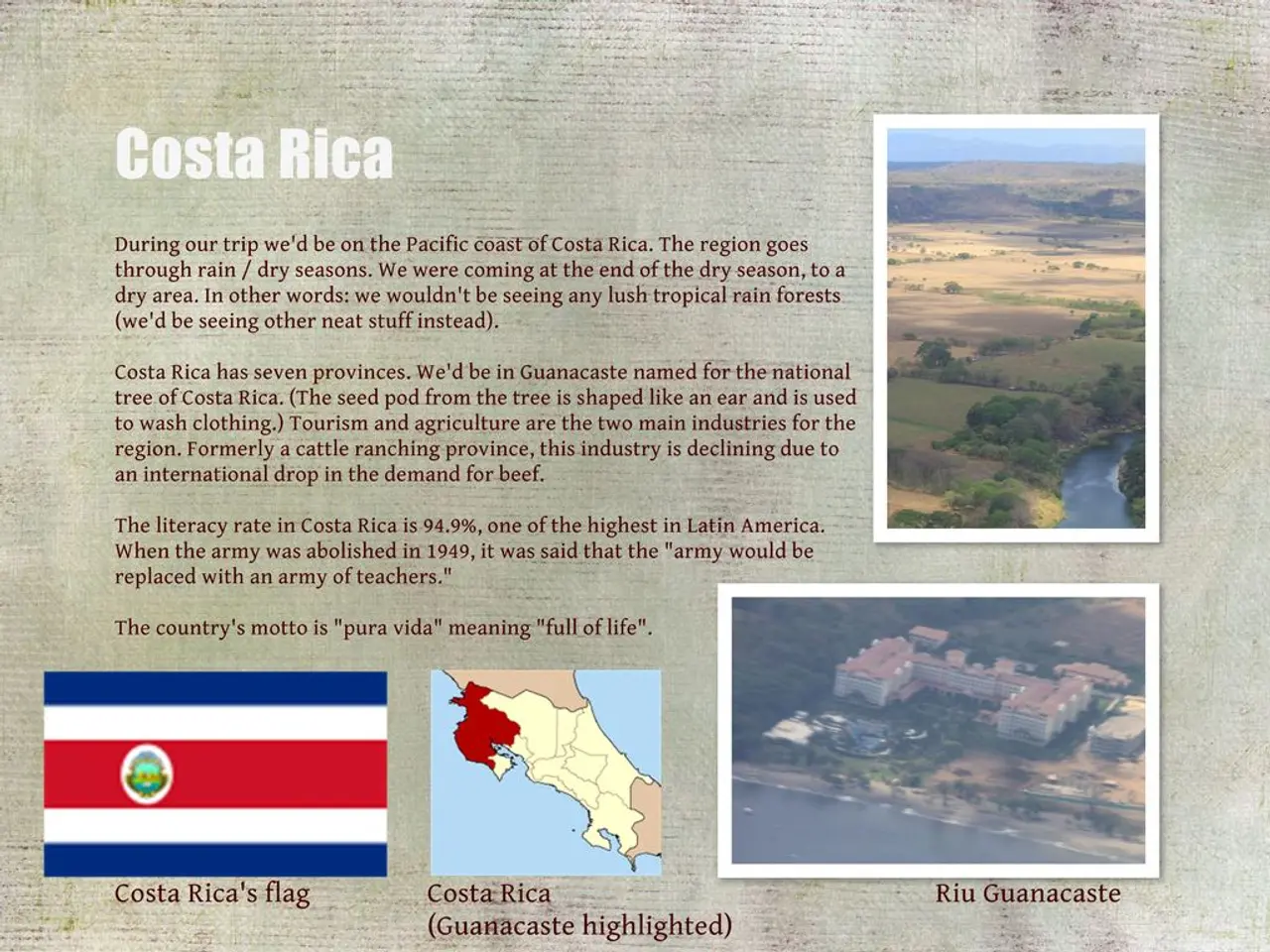Panama City's appeal stretches beyond just its renowned canal, offering a rich and diverse cityscape.
Panama City, located in Panama, is often referred to as the "Miami of Central America." This dynamic metropolis is a melting pot of cultures, showcasing a unique blend of Indigenous, Spanish colonial, Afro-Caribbean, and Asian influences.
A Rich Culinary Heritage
The city's food culture is a testament to its multicultural heritage. Afro-Caribbean ingredients like coconut milk and plantains, Spanish colonial staples such as rice dishes and roasted meats, indigenous corn-based foods like tortillas and tamales, and Chinese fusion influences can all be found in Panama City's diverse cuisine.
Food plays a significant role in Panamanian culture, symbolizing heritage and family identity. Traditional recipes, passed down through generations, are a staple in local dining.
Top Tourist Attractions
Panama City offers a wealth of tourist attractions that highlight its historical, cultural, and natural significance.
Historic Sites
The colonial Casco Viejo (Old Town) is a must-visit, with its impressive architecture and iconic landmarks such as the Plaza de la Catedral and its cathedral, Las Bóvedas waterfront promenade, Palacio de las Garzas (the presidential palace), and the National Theatre.
Panama Canal Attractions
The Miraflores Visitors Center provides a museum and ship simulator experience explaining the canal’s operation, alongside the Museo del Canal Interoceánico.
Markets
The Mercado de Mariscos, near Casco Viejo, offers fresh, local seafood and prepared dishes like ceviche, reflecting the city’s vibrant coastal food culture.
Natural and Indigenous Experiences
Tours to the Embera Indigenous Village and the Chagres Rainforest offer cultural immersion with music, dance, local cuisine, and the chance to explore Panama’s lush natural environment.
Other Highlights
The Calzada de Amador (Amador Causeway) offers picturesque views and recreational opportunities, built using the rocks excavated during the canal’s construction.
Modern Panama City
Modern Panama City is a blend of neo-classical French, colonial Spanish, and art deco styles. The city's 17th-century Casco Viejo has seen a flood of investment, resulting in the restoration of long-neglected mansions, chic rooftop bars, ocean-front hotels, and characterful boutiques.
Weekend Activities
Recreovía transforms the Cinta Costera 3 highway into a 4.3-mile route for pedestrians and joggers every Sunday morning at 6am, providing a perfect opportunity for exercise and enjoying the city's vibrant atmosphere.
Umami Bodega, a bar near San Francisco, hosts weekly jazz nights, paying homage to tambo jazz, a style unique to Panama City.
Shopping and Artisans
Mercado de Mariscos is not just a seafood market; it's also a place where diners can try traditional Panamanian cuisine. Mia Mia sells locally made crafts, including molas hand-stitched by Guna artisans, in Casco Viejo. Kindly Shop, another Casco Viejo boutique, stocks 45 mostly Panamanian- and women-owned brands with a focus on ethical gifting.
Panama City's Identity
Panama City's capital refuses to be determined by outside influences and is intent on defining its own identity. This is evident in the city's thriving food scene, its unique architecture, and its commitment to preserving and showcasing its rich cultural heritage.
Dining and Entertainment
El Trapiche, a local institution, is known for its no-nonsense Panamanian dishes, and is part of a small chain. Maito, located in San Francisco, was ranked 14th in Latin America in 2024's The World's 50 Best Restaurants list.
I Love Panama Chocolate handmakes its chocolate on site in Casco Viejo, using cacao from the Bocas del Toro archipelago. Cerro Ancon is a hilltop park overlooking Casco Viejo, popular for jogging and spotting wildlife such as keel-billed toucans, hummingbirds, and ospreys.
In conclusion, Panama City offers a unique blend of history, culture, and nature that makes it a dynamic destination for travellers. Whether you're exploring its historic sites, immersing yourself in its vibrant food culture, or enjoying its modern amenities, Panama City promises an unforgettable experience.
- Panama City's food scene is a reflection of its diverse cultural heritage, featuring ingredients and dishes from Afro-Caribbean, Spanish colonial, indigenous, and Chinese influences.
- The city's historical significance is evident in attractions such as the Casco Viejo, the Plaza de la Catedral, and the Panama Canal's Miraflores Visitors Center.
- Nature enthusiasts can visit the Chagres Rainforest or the Embera Indigenous Village, providing opportunities to explore Panama's lush forests and learn about its indigenous species and culture.
- Locals and visitors alike can enjoy modern Panama City's neo-classical French, colonial Spanish, and art deco architecture, particularly in the restored buildings of Casco Viejo.
- Weekend activities in Panama City include jogging or walking on the Cinta Costera 3 highway during Recreovía, or attending jazz nights at Umami Bodega.
- Shopping in Panama City can be an adventure, with markets like Mercado de Mariscos offering traditional food and locally made crafts.
- Panama City's identity is shaped by its commitment to preserving its cultural heritage, showcasing its unique architecture, and cultivating a rich food scene, setting it apart as a dynamic and unforgettable travel destination.




